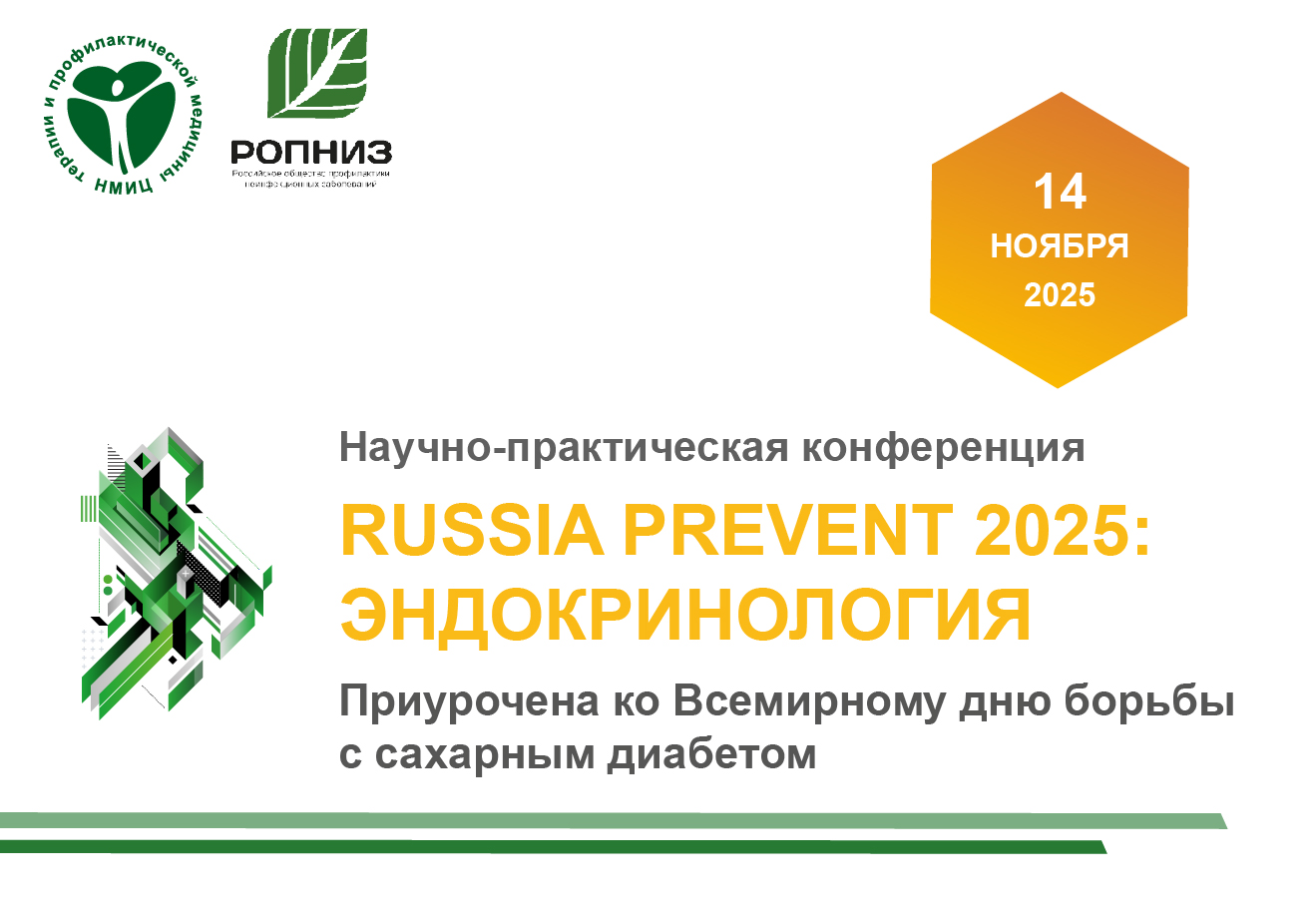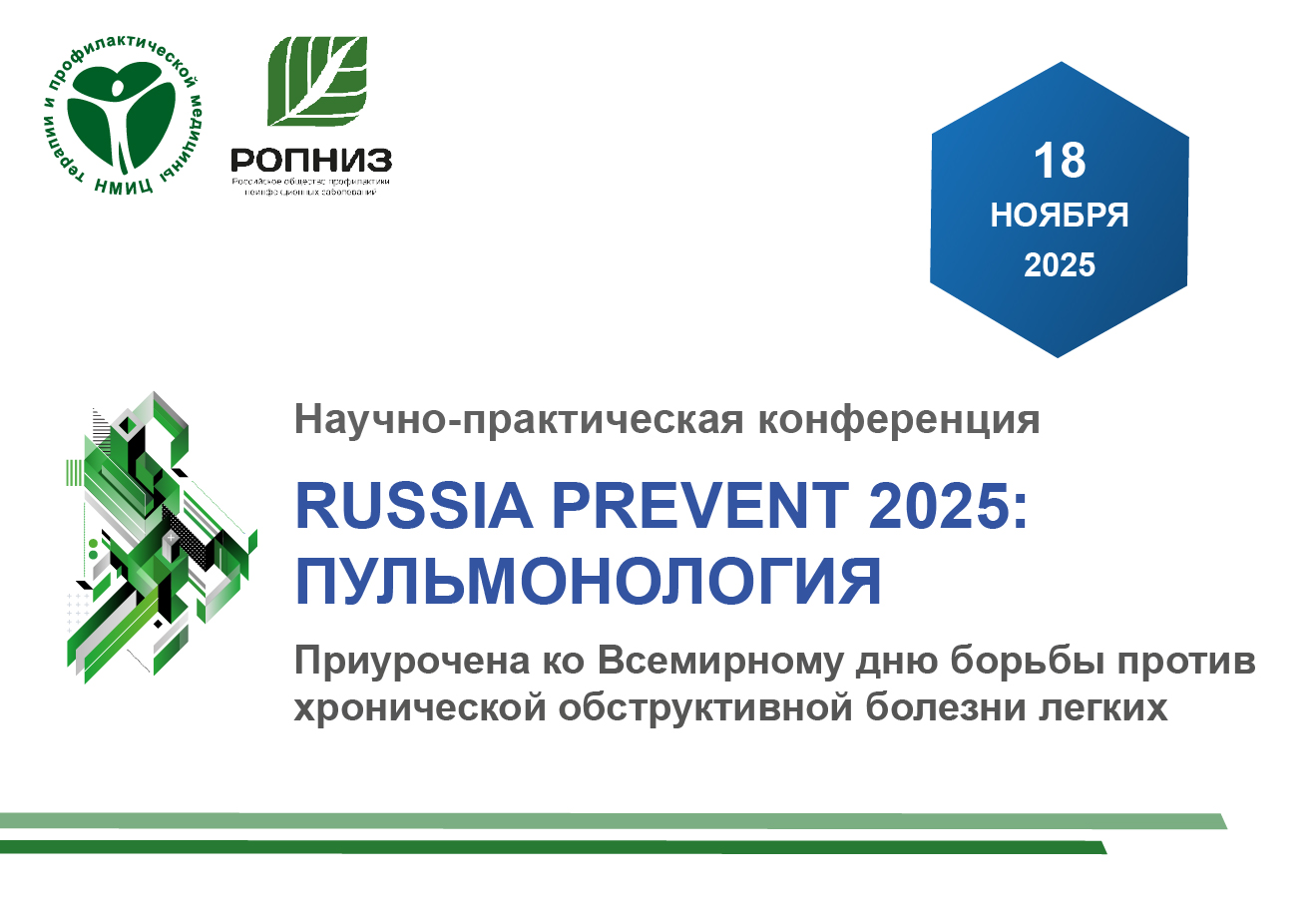Body mass, marital status, and number of children in the family
Abstract
Aim. To study the effects of social factors (marital status, the number of children born and raised in the family) on the incidence of body weight (BW) increase. Material and methods. The 15-year follow-up focussed on BW dynamics in men and women, in regard to the changes in their martial status. At baseline, all participants were married (n=845; 327 men and 518 women). To evaluate the effects of the children’s number on increased BW incidence, 238 women aged 40—59 years and having at least one child before the baseline, were examined (≥ 2 children in 163 women, 1 child in 75 women). Increased BW was registered if body mass index (BMI) was 25 kg/m2 or higher. Results. In widowed participants, the incidence of BW increase was lower (1,9 %) than in those married (10,5 %; p<0,01) or divorced (21,4 %; p<0,01). In widowed women, the normalisation of initially increased BW was registered more often (13,5 %), compared to their still married peers (4,3 %; p<0,05). In those still married, BMI increased from 26,95±0,09 to 27,91±0,09 kg/m2 (p<0,001), while in those widowed, it decreased from 29,92±0,24 to 29,34±0,24 kg/m2 (p<0,05). In women with 2 or more children, the incidence of BW increase was higher (85,3 %) than in women with only one child (73,3 %; p<0,05). Conclusion. The change in marital status could affect BW dynamics. Spouse death is an important cause of BW reduction. In women with 2 or more children, increased BW was more common than in women with only one child.
About the Authors
I. V. DovgalevRussian Federation
B. A. Trotsenko
Russian Federation
I. V. Tsimbalyuk
Russian Federation
V. V. Obraztsov
Russian Federation
V. V. Seryakova
Russian Federation
A. K. Zapodovnikov
Russian Federation
R. S. Karpov
Russian Federation
References
1. Poirier P, Eckel RH. Obesity and cardiovascular disease. Curr Atheroscler Rep 2002; 4: 448-53.
2. Чазов Е.И. Проблемы первичной и вторичной профилактики сердечно-сосудистых заболеваний. Тер архив 2002; 9: 5-8.
3. Оганов Р.Г., Перова Н.В., Метельская В.А. и др. Абдоминальное ожирение у больных артериальной гипертонией: атерогенные нарушения в системах транспорта липидов и обмена углеводов. РКЖ 2001; 5: 16-20.
4. Pischon T, Boeing H, Hoffmann K, et al. General and Abdominal Adiposity and Risk of Death in Europe. N Engl J Med 2008; 359(20): 2105-20.
5. Шальнова С.А., Деев А.Д., Оганов Р.Г. Факторы влияющие на смертность от сердечно-сосудистых заболеваний в российской популяции. Кардиоваск тер профил 2005; 1: 4-9.
6. Eckel RH, York DA, Rossner S, et al. American Heart Association. Prevention Conference VII: obesity, a worldwide epidemic related to heart disease and stroke: executive summary. Circulation 2004; 110: 2968-75.
7. World Health Organization. Obesity: Preventing and managing the global epidemic [WHO Technical report series No. 894] 2000. Geneva. WHO.
8. Ogden CL, Carroll MD, Curtin LR, et al. Prevalence of overweight and obesity in the United States 1999-2004. JAMA 2006; 295: 1549-55.
9. Snyder EE, Walts B, Perusse L, et al. The human obesity gene map: the 2003 update. Obes Res 2004; 12: 369-439.
10. Shahraki M, Shahraki T, Ansari Н. The effects of socio-economic status on BMI, waist: hip ratio and waist circumference in a group of Iranian women. Public Health Nutr 2008; 1: 1-5.
11. Миронов Б.Н. Биологический статус населения СанктПетербурга в 1946—2005 гг. Мир России 2007; 1: 99-146.
12. Lipowicz A, Gronkiewicz S, Malina R. Body mass index, overweight and obesity in married and never married men and women in Poland. Am J Hum Biol 2002; 14: 468-75.
13. Debbie A, Lawlor MP, Jonathan R, et al. Is the Association Between Parity and Coronary Heart Disease Due to Biological Effects of Pregnancy or Adverse Lifestyle Risk Factors Associated With Child-Rearing? Circulation 2003; 107: 1260-4.
14. Koch E, Bogado M, Araya F, et al. Impact of parity on anthropometric measures of obesity controlling by multiple confounders: a cross-sectional study in Chilean women. J Epidemiol Community Health 2008; 62(5): 461-70.
15. Hajian-Tilaki KO, Hiedari B. Association Between Parity, Live Birth and the Risk of Obesity in Women. Int J Endocrinol Metab 2007; 4: 163-72.
16. Khalid A Madani. Obesity in Saudi Arabia. Bahrain Medical Bulletin 2000; 22(3): 113-8.
17. Den Tonkelaar I, Seidlell JC, Van Noord PA, et al. Fat distribution in relation to age, degree of obesity, smoking habits, parity and estrogen use: a crossectional study in 11,825 Dutch women participating in the DOM-project. Int J Obes 1990; 14: 753-61.
18. Grundy E, Kravdal O. Reproductive History and Mortality in Late Middle Age among Norwegian Men and Women. Am J Epidem 2008; 167(3): 271-9.
Review
For citations:
Dovgalev I.V., Trotsenko B.A., Tsimbalyuk I.V., Obraztsov V.V., Seryakova V.V., Zapodovnikov A.K., Karpov R.S. Body mass, marital status, and number of children in the family. Cardiovascular Therapy and Prevention. 2010;9(5):24-27. (In Russ.)
























































